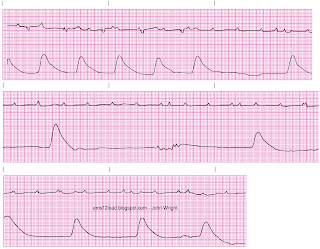
I’m a Mom to two amazing kids, an EMT, and occasionally I take some pictures. I love to write, laugh, and score swag at EMS conferences. I have a serious Diet Pepsi addiction. I have trauma shears and I’m not afraid to use them. I’m in medic school thanks to my online angels.
No, I didn't just start doing a patient assessment in the middle of this blog post. Pink, Warm, & Dry is the name of Epijunky's blog. Even though I haven't seen her post anything on here just yet, she is listed as a contributer and I bet something will eventually be posted, some day. It takes a lot to run a blog, and we have lives outside the blogosphere and outside of EMS, believe it or not. So there are a few contributers that have not yet contributed. Maybe they are awaiting inspiration. Anyhow, in her most recent post she gets nostalgic, talking about, what seems to have been a pretty busy shift, as a wide-eyed student.












.jpg)
